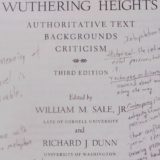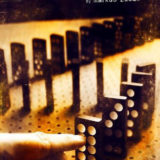Tips for Arranging Classroom Desks
What’s the best way to arrange the desks in your classroom? Rows? Groups? Pods? I’m always searching for the perfect seating arrangement, and while I haven’t found it yet, I have found some good advice from classroom management expert Fred Jones. He offers some practical tips for arranging desks in a way that allows you to “work the room” and keep distractions to a minimum.
Zones of Proximity
Jones begins by describing three zones that surround a teacher’s body:
“The red zone is nearest to you. Red means stop. Students in the red zone cool it. Outside the red zone is the yellow zone. Yellow signals caution. In the yellow zone, students cool it as long as you are facing in their direction, but, when your back is turned, the light turns green. Beyond the yellow zone lies the green zone — green as in go! When students in the green zone look up to see that you are on the far side of the room, particularly if you are preoccupied, it is goof-off time.”
The key is to arrange desks so that by moving around the room you can quickly get students into your red and yellow zones.
Suggested Seating Arrangements
In his article “More Time on Task, Less Goofing Off,” Jones suggests two seating arrangements that allow teachers to move freely among the students:
 I tried a modified version of this seating chart last year and had great success with it. I don’t really have a lot of classroom discipline problems, but I was able to get around the room more effectively to check homework and coach students in their reading and writing. The biggest problem I had was getting the desks back in the right spot after the pre-algebra teacher had the students move the desks apart during quizzes.
I tried a modified version of this seating chart last year and had great success with it. I don’t really have a lot of classroom discipline problems, but I was able to get around the room more effectively to check homework and coach students in their reading and writing. The biggest problem I had was getting the desks back in the right spot after the pre-algebra teacher had the students move the desks apart during quizzes.
 I’ve never tried this arrangement, but I like the concept. I couldn’t try it last year because I had a fairly large class. This year I’m going to have only 21 students, so before school starts I’m going to try this arrangement to see how it fits in my classroom.
I’ve never tried this arrangement, but I like the concept. I couldn’t try it last year because I had a fairly large class. This year I’m going to have only 21 students, so before school starts I’m going to try this arrangement to see how it fits in my classroom.
I’ve found that the most important thing in classroom design is to have the room to keep moving. The best teachers are like coaches who move from one student to another. They observe with a professional eye, offer a quick bit of advice or feedback, and move on to the next student, never staying too long. Jones’ ideas about the zone of proximity and arranging desks help teachers “work the room” more efficiently.
Tools for Teaching: Discipline, Instruction, Motivation contains more sound advice from Fred Jones, including additional seating diagrams and suggestions for organizing your classroom.
Your Turn
How do you design your classroom? Share your tips with fellow Teen Literacy Tips readers by leaving a comment below.













my class room has l shaped layers